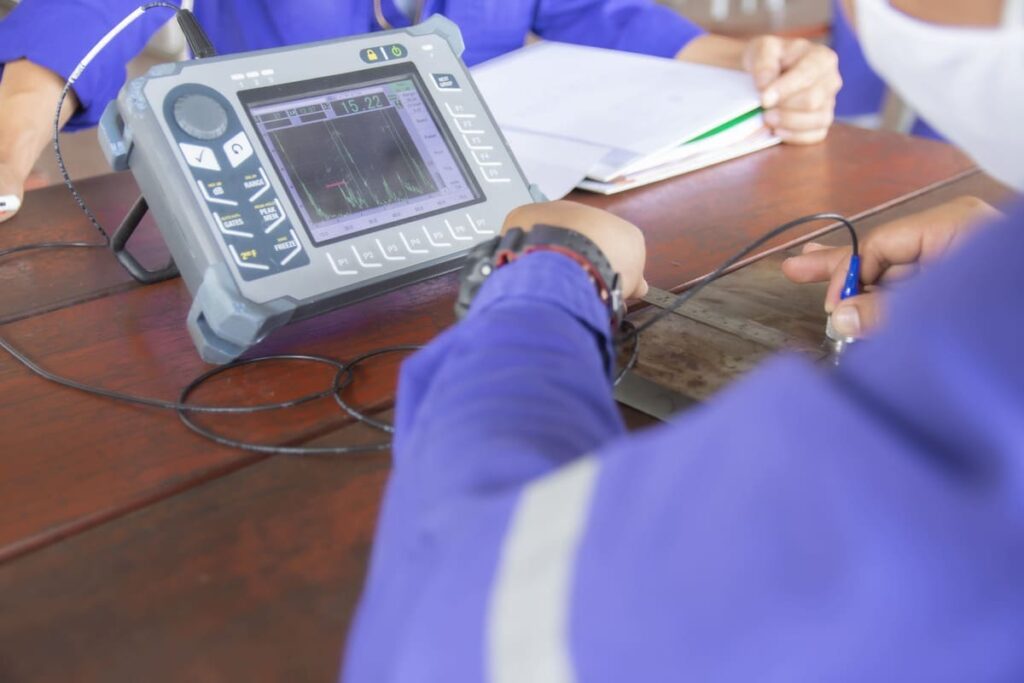Hardness testing is an important method to determine the hardness of various materials used in equipment and infrastructure, such as steel and aluminum. Hardness testing ensures equipment and infrastructure safety, reliability, and performance in challenging operating environments.
What is Hardness Testing?
Hardness testing uses a portable device called a hardness tester. The tester applies a specific force to the material and measures the resulting indentation or deformation. The size and depth of the indentation determine the material’s hardness.

What are the Uses of Hardness Testing?
The uses of hardness testing in the oil and gas industry include:
1. Quailty Control:
Hardness testing ensures that the materials used in equipment and infrastructure meet the required hardness specifications. This helps maintain the materials’ quality and prevent equipment failures.
2. Material Selection:
Hardness testing is also helpful in selecting the appropriate materials for specific applications. By determining the hardness of different materials, engineers can choose the most suitable material for the required application, considering factors such as the operating environment, load-bearing capacity, and durability.
3. Heat treatment evaluation:
Heat treatment processes strengthen materials and improve their hardness. Hardness testing can evaluate the effectiveness of these processes, ensuring that the treated materials meet the required hardness specifications.
4. Damage assessment:
Hardness testing can assess the damage caused to materials by wear, corrosion, or other forms of degradation. By measuring the hardness of a material before and after exposure to adverse conditions, engineers can determine the extent of the damage and take appropriate remedial measures.
Overall, hardness testing is an important tool in the oil and gas industry for ensuring equipment and infrastructure safety, reliability, and performance in challenging operating environments.
What are the Benefits of Hardness Testing?
There are several benefits of hardness testing, including:
1. Improved safety:
Hardness testing helps to ensure that materials used in equipment and infrastructure are strong enough to withstand the pressures of the operating environment, improving safety by reducing the risk of equipment failures and accidents.
2. Enhanced reliability:
Hardness testing can ensure that materials meet the required specifications for hardness, improving the reliability of equipment and infrastructure.
3. Increased efficiency:
By selecting the most suitable materials for specific applications, hardness testing can help to increase efficiency by improving the performance and lifespan of equipment and infrastructure.
4. Cost savings:
Hardness testing can help identify potential problems early, leading to cost savings by preventing equipment failures and reducing the need for maintenance and repairs.
5. Compliance with regulations:
Many regulations and standards require materials used in the oil and gas industry to meet specific hardness requirements. Companies can ensure compliance with these regulations and standards by using hardness testing.
6. Better material selection:
Hardness testing can help to identify the most suitable materials for specific applications, taking into consideration factors such as the operating environment, load-bearing capacity, and durability. This can result in better material selection and improved equipment and infrastructure performance.
Overall, hardness testing is essential for ensuring equipment and infrastructure safety, reliability, and performance in challenging operating environments.